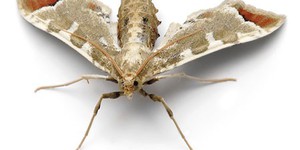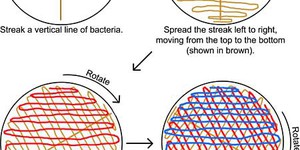Fifth Grade, Zoology Science Projects (26 results)
Animals have developed an amazing variety of body plans, behaviors, and strategies in order to succeed in the struggle for survival. Explore topics ranging from regeneration, camouflage, animal migration, how to attract hummingbirds, and more.
|
Select a resource
Coding Projects
Sort by
|
Do you really catch more flies with honey than with vinegar? Do an experiment to find out! Watch the video above to learn how to make a simple homemade fly trap using a plastic bottle. Then, experiment to discover which bait attracts the most flies. You can try a variety of liquids, and you can also use solid bait like rotting food or meat, but you will need to add some water so the flies drown. A drop of soap can help break the surface tension of the water, making it easier for the flies to…
Read more
Have you ever seen butterflies fluttering around outside, gliding through the air and landing on flowers? While they are delicate and fragile, butterflies are actually excellent flyers. They are so good, in fact, that scientists at Harvard University studied butterfly wing shapes as an inspiration for building a miniature flying robot. In this science project, you will do your own version of the Harvard scientists' experiment to measure the flight performance of butterfly wings.
Read more
New
Have you ever walked next to your favorite ocean, lake, or creek and seen plastic waste everywhere? Have you ever thought about how much plastic breaks down into microplastics and pollutes waterways? Scientists are coming up with new ways to remove these microplastics from our waterways, and now you can test them out for yourself at home.
Read more
How do you tell the difference between a bird and a fish? Birds tend to have feathers and can fly, while fish have no legs and can breathe underwater. In this project, you will explore how to create a decision tree using machine learning that can classify different animals based on multiple characteristics. This project is designed for beginners and requires little to no coding experience. Ready to give it a shot?
Read more
Animals survive in all sorts of extreme environments, whether it is a polar bear out and about when it is -40°F, a desert iguana trying to find food as the temperature rises to 110°F, or a deep sea anglerfish living 3281 feet down into the sea. How do they do it? The answer is adaptations! Their bodies have special features that allow them to live in those environments. You might not be able to dive down 3281 feet to observe the deep sea anglerfish, but in this science fair project you…
Read more
Ladybugs are common insects in North American gardens that prey upon aphids, making them all the rage in biological pest control. Ladybugs can be bred in captivity making them a good insect to study. Just chop off an aphid infested plant stem for food, make a water soaked cotton ball for water, and add to a small plastic container with a lid to make a breeding box. You can use ladybugs collected from the wild, or buy ladybugs from your local nursery. The most common species is the 12-spotted…
Read more
New
Have you ever seen a waiter balance an entire tray of drinks without spilling any? How do they do it? Do you think you could build a robot waiter that can do the same thing? In this project, you will learn how to build a self-balancing robotic tray. You can incorporate the auto-leveling tray into one of our many other robotics projects, like the Bluebot or robotic arm.
Read more
A cricket as a thermometer? Yes, that is right! In this science fair project, you will investigate how the chirps of these tiny creatures can do more than lull you to sleep—they can tell you the temperature!
Read more
Milkweed bugs, as their name suggests, have a close relationship with the milkweed plant. The plant produces an irritating, milky sap, and toxic compounds, but somehow the milkweed bug is unaffected by them. Instead, it concentrates chemicals from the sap in its body, acquiring an unsavory taste that, along with its bright coloration, protects it from predators. Given this close relationship, will the milkweed bug exhibit a color preference for egg-laying sites? This project is designed to find…
Read more
Do you love animals and want to help keep them healthy? Well, here's your chance to design and tailor a toy that will bring out your pet's most playful nature. In this science fair project, you'll evaluate the skills and activities of your pet and determine what kinds of toys most excite your pet and make him or her lively and curious. So call your furry or feathered friend, and let the frolicking begin!
Read more
You are coming into the house after a game of flashlight tag with your friends, but the front porch light is not on for you to see the doorknob! What is going on? Maybe your parents know that turning a light on means moths will gather there, and they do not want you letting moths inside when you open the door. You have probably noticed how moths are attracted to lights at night. They will even fly dangerously close to flames in their journey toward light. In this project, you will learn a…
Read more
Do you know what is living in your backyard? How about at the playground, or in your compost pile? Nematodes, also called roundworms, are the most abundant animal on Earth and they might be living in any of these places. In this science project you'll isolate nematodes from several soil samples to discover the best nematode habitats.
Read more
|















